10 Italian Antique Mirrors That Show Off Old-World Craftsmanship
Italian antique mirrors have a way of making any room feel graceful and inviting. Their designs reflect the elegance and romance of centuries of artistry. Each one holds a glimpse of history, making it more than just a decorative piece. Step into the world of vintage elegance and see how these mirrors can enrich your home with timeless style.
This post may contain affiliate links, which helps keep this content free. Please read our disclosure for more info.
Venetian Etched Glass Wall Mirror circa 18th century
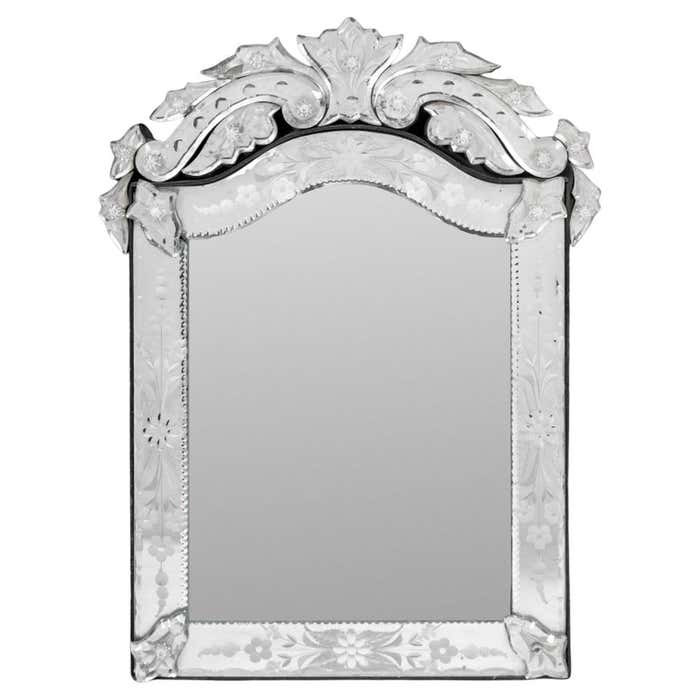
Dating to the 1700s, this Venetian mirror features hand-etched floral borders and delicate rosettes. Each beveled plate was cut and fitted by hand, then pinned to a wood backboard. The glass shows gentle waviness that hints at early production methods. Silvering has mellowed to a soft glow that flatters candlelight and daylight alike. Current auction results suggest a value of about $7,000 to $14,000 depending on size and condition.
A closer look reveals engraved garlands that repeat with charming irregularity. Small verre pieces frame the central plate like jewelry around a neckline. Traditional tin-mercury silvering adds depth and a faint cool tone. Wear at the edges reads as honest age rather than damage. Collectors prize examples that retain original backing and rosette pins which can raise the price.
Genoese Baroque Giltwood Mirror late 17th century
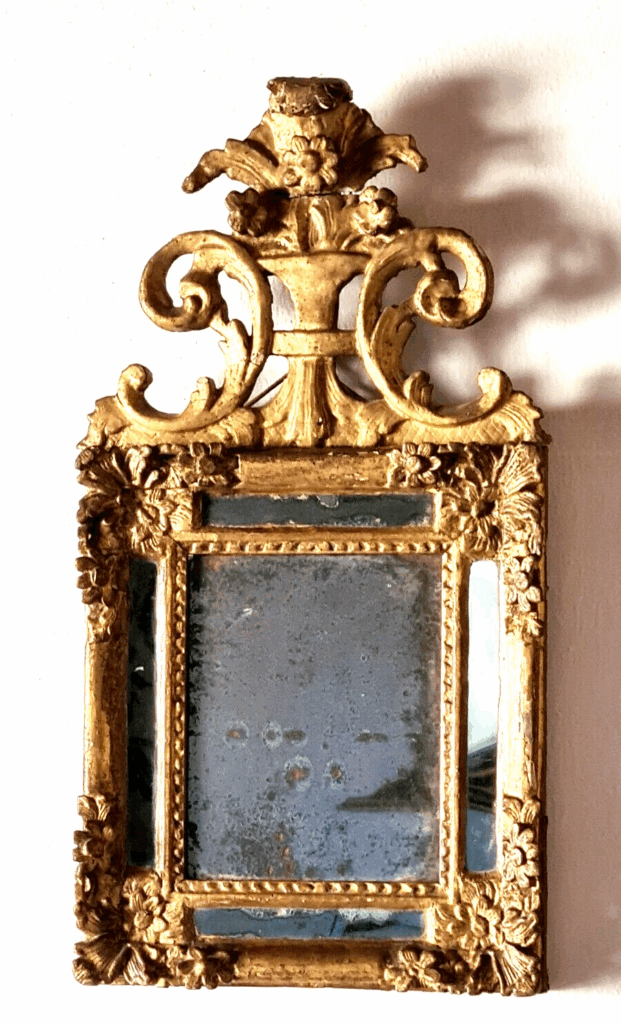
From the late 1600s, Genoa produced exuberant giltwood frames with bold scrolls and acanthus. Carvers shaped thick limewood by hand then applied gesso and water gilding. The gold leaf has aged to a warm tone with subtle burnish on high points. Deep undercutting creates shadows that give the frame a lively presence. Pieces of this quality often trade between $12,000 and $28,000 depending on scale.
One quickly sees tool marks and slight asymmetry that speak to handwork. The crest often features shells or a cartouche that anchors the design. Mirror plates may be period or old replacements which affects value. Original leaf and untouched patina are viewed favorably by buyers. Larger floor models with strong provenance can reach higher figures.
Tuscan Neoclassical Parcel-Gilt Mirror late 18th century
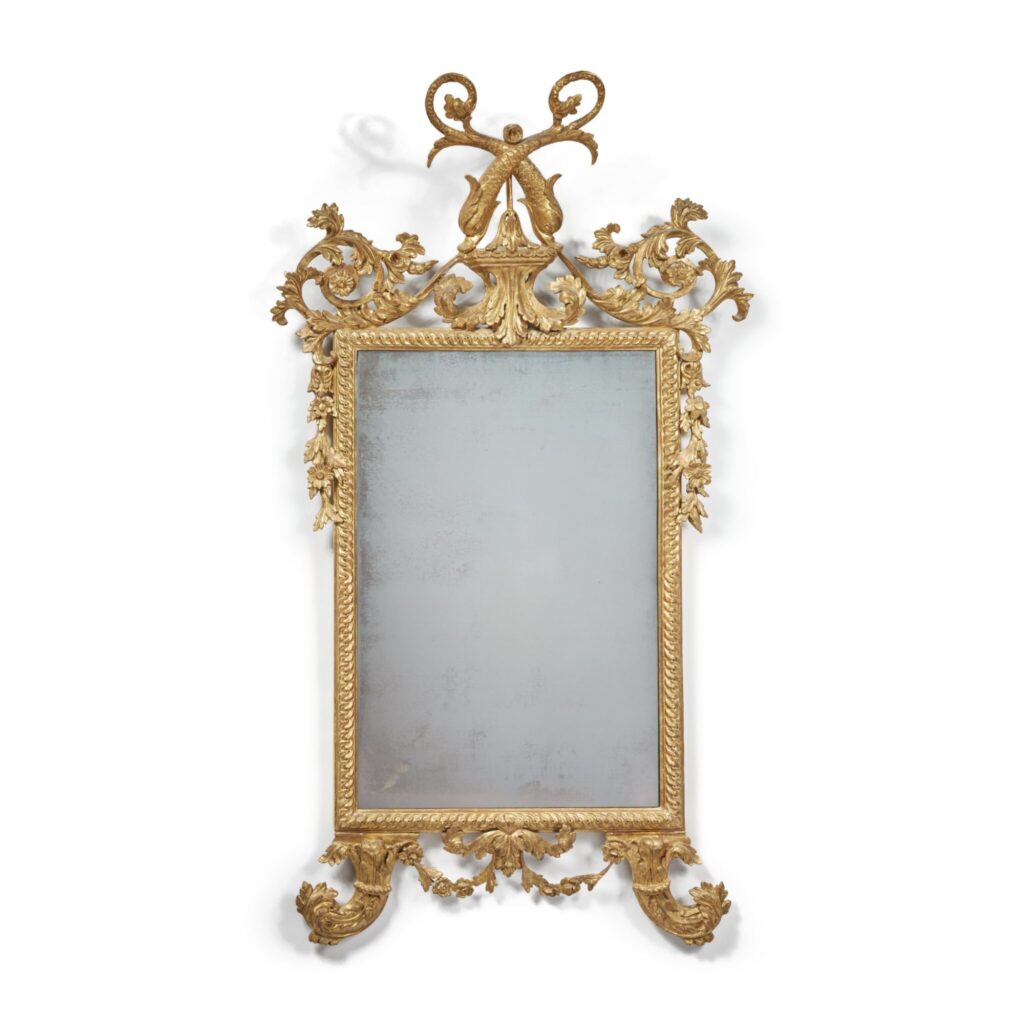
By the 1780s, Tuscan makers favored cleaner lines with delicate husk chains and urns. Frames mix painted surfaces with gilt highlights to create balance. Reeded rails and anthemion motifs speak to the taste of the period. The restrained silhouette works easily in modern rooms. Values tend to sit around $4,000 to $9,000 for good sizes.
Surface inspection often shows original paint beneath touchups. Gilded accents catch light without overwhelming the design. Old glass with bevels adds charm and a gentle sparkle. Stable craquelure in the paint layer is expected for age. Pairs or overmantel formats can reach toward the top of the range.
Venetian Trumeau Mirror with Painted Panel 18th century
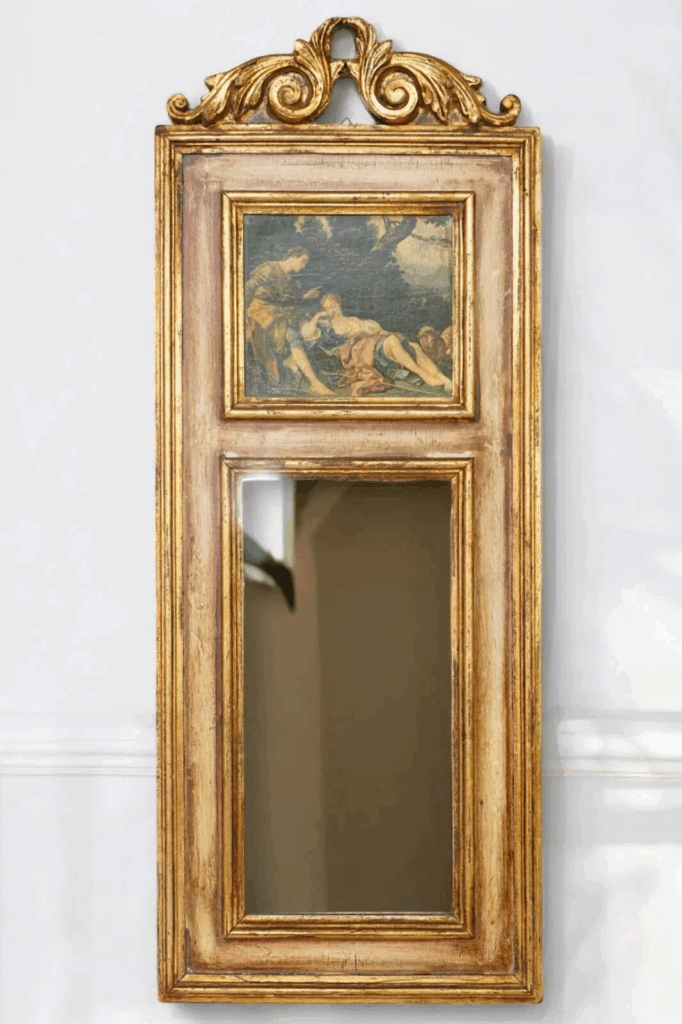
Trumeau formats pair a painting above with a mirror below within one frame. Venetian artists often chose pastoral or mythic scenes in soft colors. Gilt and painted borders unite the two sections into one statement piece. The composition adds height to narrow walls and corridors. Well-kept examples often bring $6,000 to $16,000.
Paint surfaces show craquelure that reads as pleasing age. The mirror plate may be mercury silvered with natural sparkle. Old stretcher bars behind the canvas help confirm period origin. Minor flaking should be stabilized rather than overcleaned. Balanced design and original painted panel drive interest and value.
Piedmont Louis XVI Style Carved Mirror late 18th century
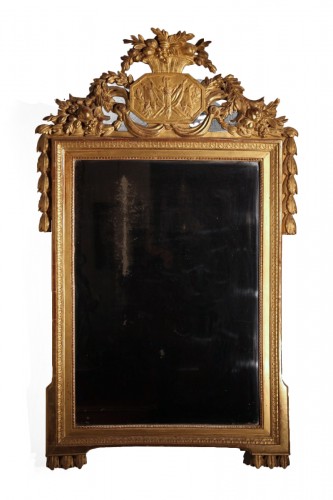
Northern Italian workshops around Turin embraced French taste with tied ribbons and beading. This mirror displays crisp guilloche, pearls, and a graceful bowknot crest. Gesso groundwork allowed fine detailing before gilding. The calm geometry pairs well with refined interiors. Values typically sit in the $4,500 to $10,000 range.
Original gold can show cooler tones compared with later re-gilds. Small losses at corners are common and usually acceptable. Early glass with slight waviness pairs beautifully with the frame. Collectors look for untouched backs and original hanging rings. Symmetrical designs in larger sizes are especially sought after.
Lombard Early Neoclassical Girandole Mirror late 18th to early 19th century
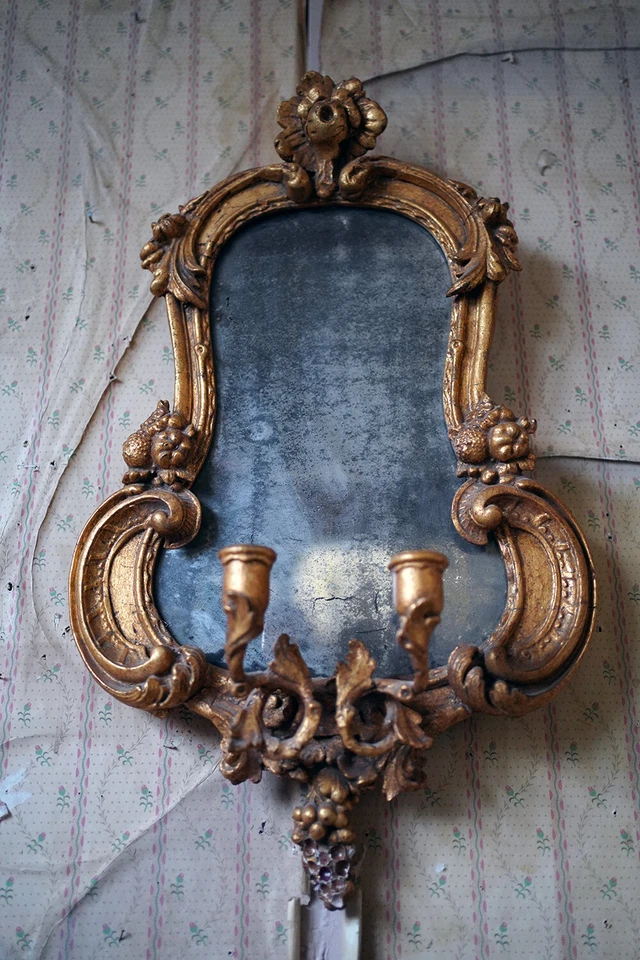
Girandole forms include candle branches attached to the frame. Lombardy produced elegant examples with rams heads or urns above a circular plate. The combination turns a mirror into lighting for festive evenings. Mercury silvering enhances the sparkle of candle flames. Typical values run from $5,000 to $13,000.
Hardware tells much about age with hand-forged screws and old sockets. Beveled plates are a welcome bonus though not required. Even patina on the gilding shows careful care across generations. Functional use with modern LED tapers keeps the look intact. Matching pairs increase desirability for mantel displays.
Venetian Oval Beveled Mirror with Floral Crest circa 1900
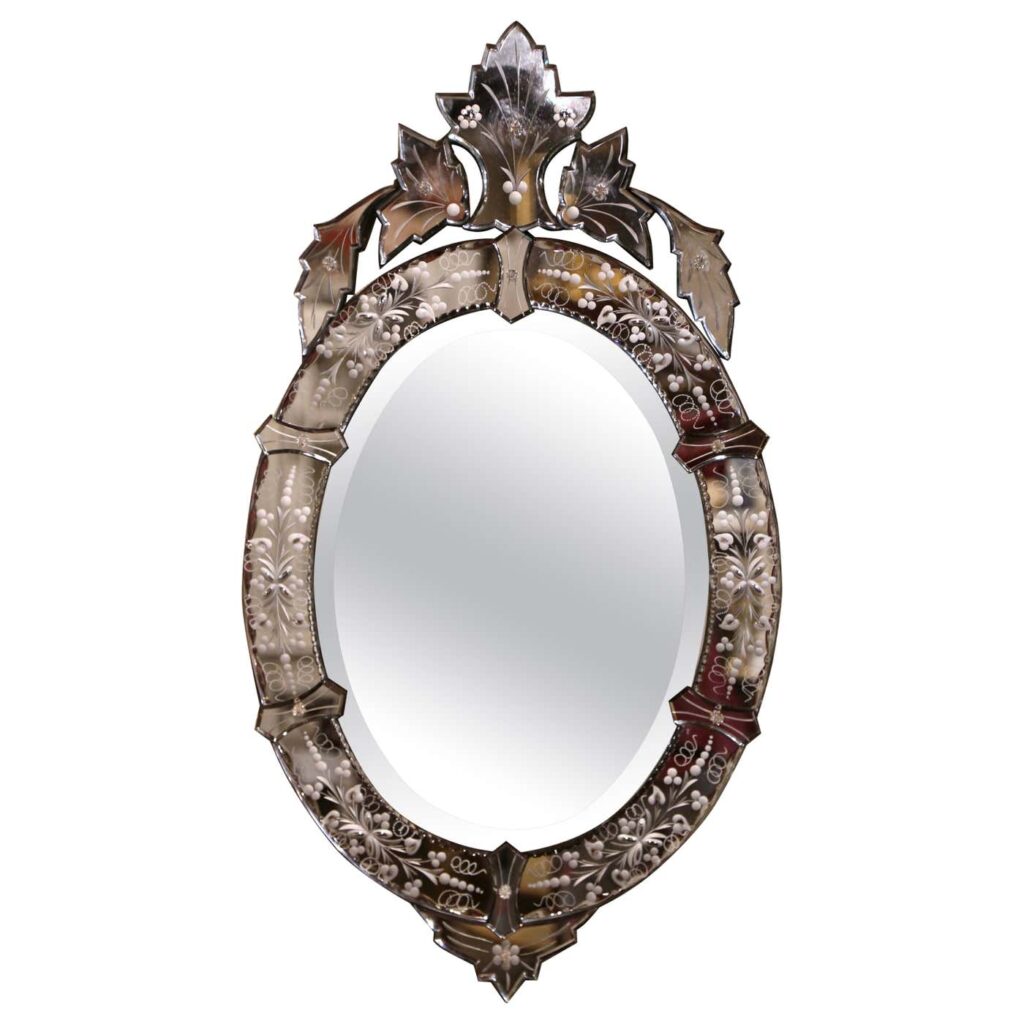
Around the turn of the century, Venetian makers revived classic etched ovals. This mirror carries a floral crest and scalloped border pieces. Bevels add sparkle while etched vines soften the outline. The look complements bedrooms and dressing areas very well. Market value often falls between $2,000 and $5,000.
Edge glass sections are pinned through to the backing board. Light foxing in the plate can add atmosphere rather than detract. Clear signatures are uncommon yet workshop traits are recognizable. Examples with intact crest pieces bring a premium. Careful wall mounting is important due to the segmented frame.
Milan Art Deco Beveled Mirror 1930s
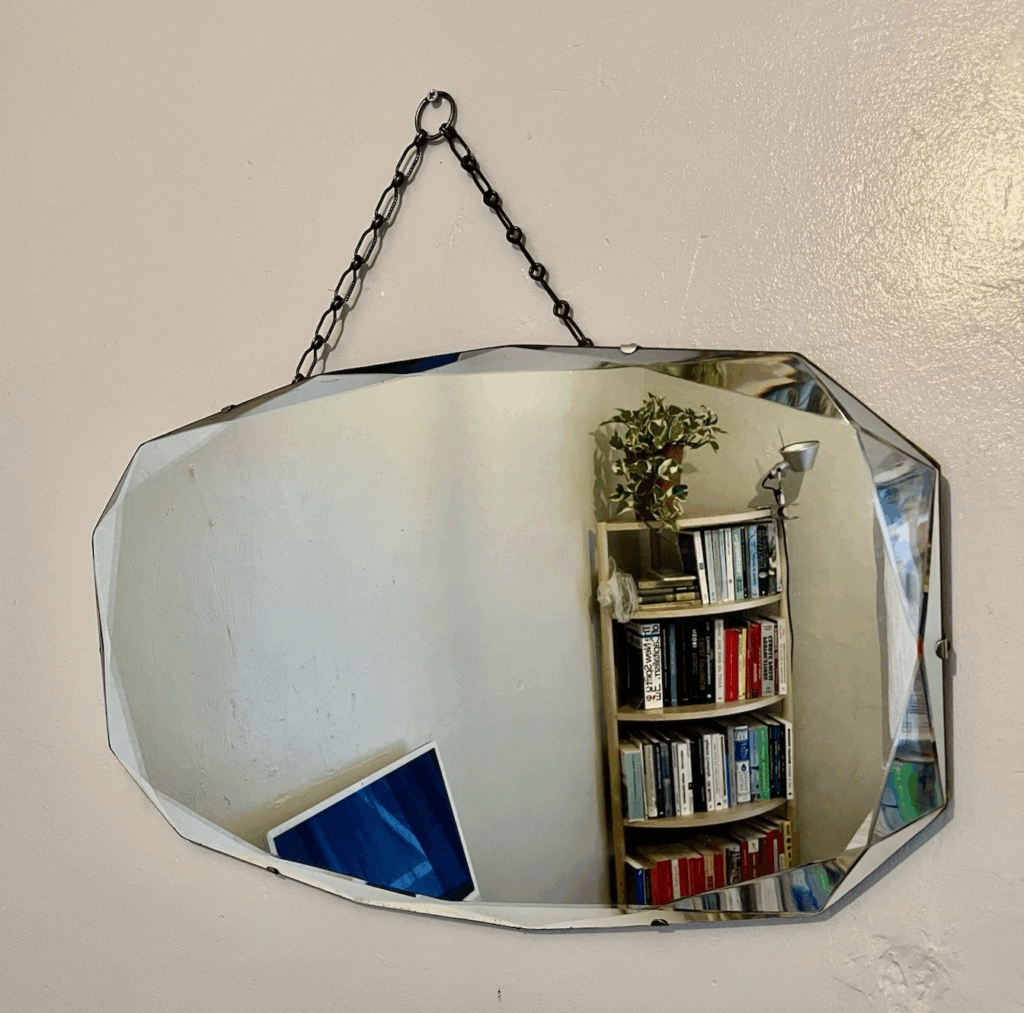
Milanese workshops produced sleek mirrors with stepped profiles and clean geometry. Thick plates with wide bevels reflect the spirit of the 1930s. Chrome accents or ebonized edges appear on some models. The style suits foyers and dressing rooms with equal ease. Current prices often sit between $1,800 and $4,200.
Inspecting the back reveals heavy boards and original hangers. Period silvering shows gentle clouding that reads as character. Chips at corners are common and should be stabilized. The mirror pairs nicely with walnut case pieces from the same decade. Signed retailer labels from Milan can raise interest and price.
Fontana Arte Wall Mirror 1950s
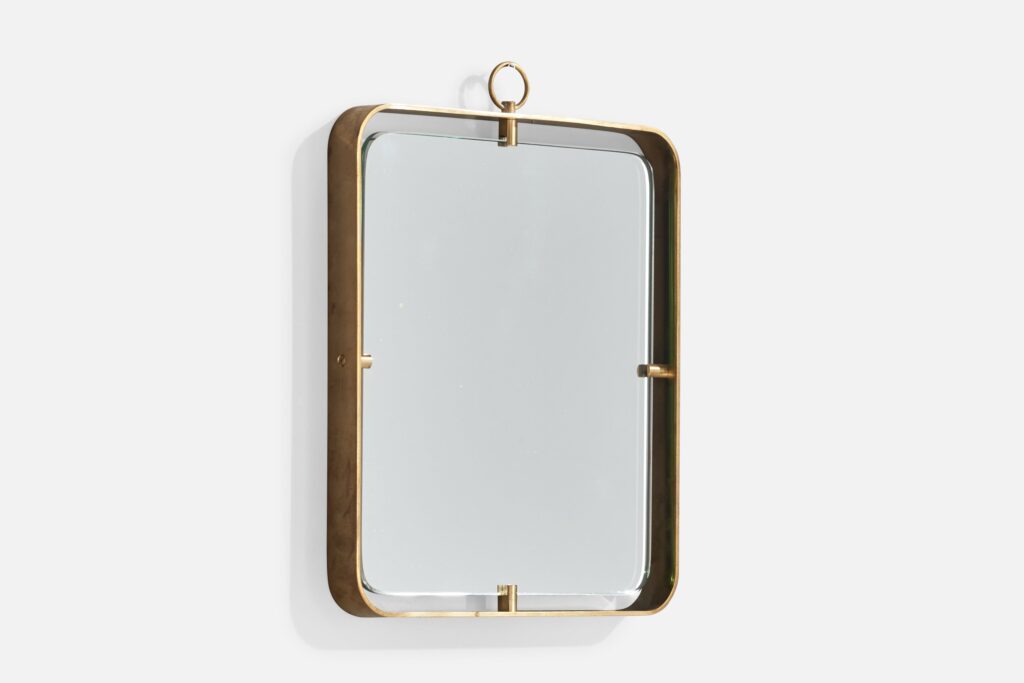
Mid-century Italy brought refined glasswork under the Fontana Arte name. Thick crystal plates with rounded corners float on metal brackets. The look feels light while using substantial materials. Pale green edges glow when viewed from the side. Collectors currently pay roughly $3,500 to $9,000 for clean examples.
Original brass mounts mellow to a soft brown tone. Small scratches in the plate confirm age yet remain unobtrusive. The design fits contemporary rooms without losing heritage. Larger sizes and documented attribution to known designers bring higher prices. Careful cleaning preserves the clarity that draws buyers.
Venetian Murano Glass Framed Mirror with Colored Accents late 19th to early 20th century
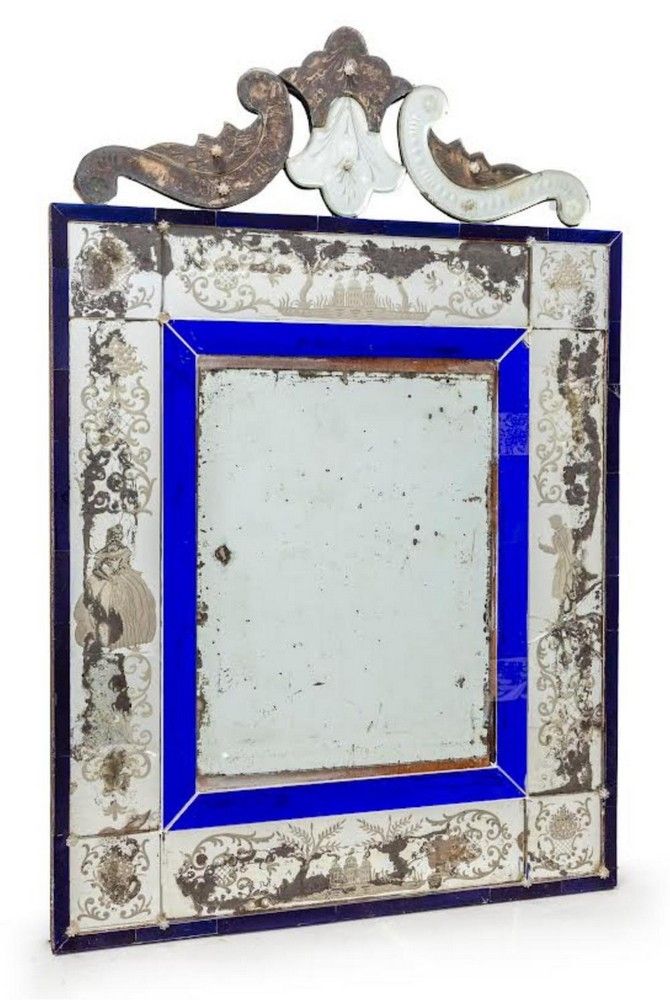
Murano workshops framed mirrors with clear and colored glass canes, rosettes, and twisted cords. Pink, blue, or amber elements brighten the perimeter like festival trim. The central plate is usually beveled and set within a wood support. Hand-applied floral rosettes vary slightly from one to the next. Price expectations typically range from $2,800 to $7,500 based on complexity.
Condition checks focus on rosette petals and cord sections. Replacements can be made by current Murano artisans and should be disclosed. Slight differences in color intensity are normal for hand-pulled glass. Original backboards and early paper labels help confirm age. A well balanced layout with intact color accents tends to sell quickly.
Italian antique mirrors remind us of an era when design was both personal and expressive. Their fine carvings, soft gilding, and aged reflections reveal a level of artistry rarely seen today.
This article originally appeared on Avocadu.
